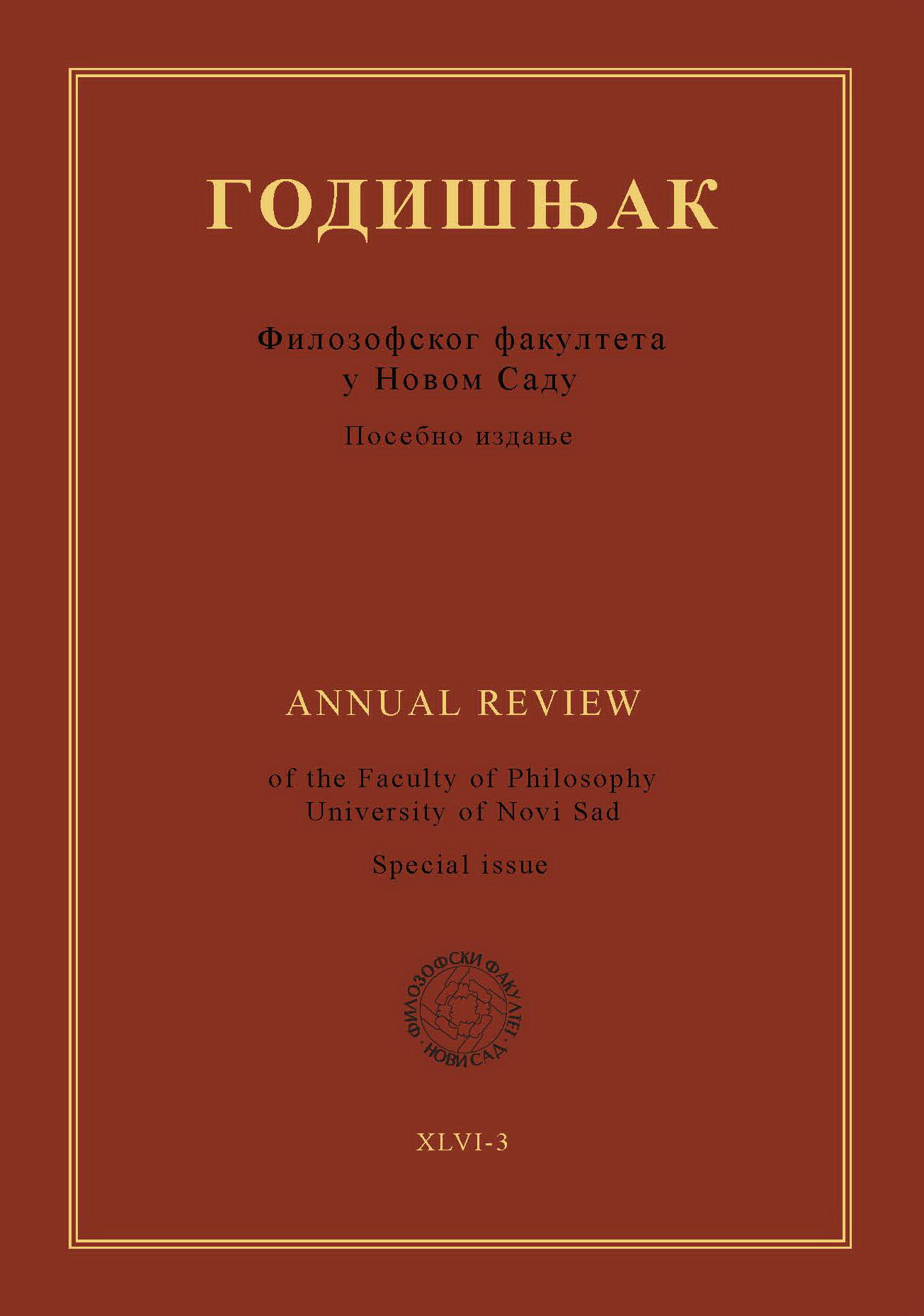ABOUT SOME MEANS OF EXPRESSION OF CAUSALITY IN FRENCH AND ITALIAN
Main Article Content
Abstract
The paper deals with expressing causality in French and Italian, from the syntactic and semantic point of view. The research first establishes the inventory of the most frequent means and syntactic procedures by which causality is formalized in French, and then a contrastive method is used to point out similarities and differences that exist in both languages, regarding its way of expression, particularly the structure of subordinating conjunctions. Finally, the analysis of the corpus showed that the observed structures in French usually have the equivalent structures in Italian, but also that there are some classification and structural incongruences between the two observed languages.The French conjunction parce que has two equivalents in Italian (perché and ché/che), although there are some differences regarding their use. It is the same for the French conjunction comme, that has its equivalent in Italian siccome. On the contrary, the French conjunction puisque has a whole range of equivalents in Italian: visto che, dato che, dal momento che. Although in Italian there is no coordinating causal conjunctions, the conjunction car finds its equivalent in Italian perché.
Downloads
Article Details

This work is licensed under a Creative Commons Attribution-ShareAlike 4.0 International License.
References
Charaudeau, P. (1992). Grammaire du sens et de l’expression. Paris : Hachette.
Delatour, Y.–Jennepin, D.–Léon-Dufour, M.–Mattlé-Yeganeh, A. & Teyssier, B. (1991). Grammaire du Français (Cours de civilisation française de la Sorbonne). Paris : Hachette.
Devoto, G.–Oli, G.-C. (1995). Il dizionnario della lingua italiana. Firenze : Le Monnier, S.p.A.
Dubois, J.–Lagane, R. (1993). La nouvelle grammaire du français. Paris : Larousse.
Fornaciari, R. (1881). Sintassi italiana dell’uso moderno. Firenze : G. C. Sansoni.
Garzanti (1985). Dizionario etimologico essenziale della lingua italiana. Milano : Garzanti.
Grevisse, M. (1973). Le français correct. Gembloux : Éditions Duculot.
Mauger, G. (1968). Grammaire pratique du français d'aujourd'hui, 4e édition. Paris : Hachette.
Moderc, S. (2006). Gramatika italijanskog jezika (Morfologija sa elementima sintakse) [Grammaire de la langue italienne (Morphologie avec les éléments de la Syntaxe)]. Beograd : Luna crescens doo.
Nazarenko, A. (2000). La cause et son expression en français. Paris : Ophrys.
Poisson-Quinton S.–Mimran, R. & Mahéo-Le Coadic, M. (2004). Grammaire expliquée du français. Paris : SEJER.
Popović, N. (2019). Neki aspekti upotrebe veznika car i parce que. Jezici i kulture u vremenu i prostoru, VIII/1, 601-610.
Renzi, L.–Salvi, G. & Cardinaletti, A. (2001). Grande grammatica italiana di consultazione (II: I sintagmi verbale, aggettivale, avverbiale. La subordinazione). Mulino : Bologna.
Riegel, M.–Pellat, J.C. & Rioul, R. (1994). Grammaire méthodique du français. 3e édition Paris : P.U.F.
Rigotti E.–Schenone, P.(1988). Grammatica italiana. Torino : SEI.
Serianni, L. (con la collaborazione di Castelvecchi, A.) (2005). Grammatica Italiana (italiano commune e lingua letteraria). Torino : Utet.
Terić, G. (2005). Sintaksa italijanskog jezika [Syntaxe de la langue italienne]. Beograd : Filološki fakultet.
Točanac-Milivojev, D. (1989). Propositions, phrase et texte. Syntaxe de phrase française. Novi Sad : ISJK.
Treccani, (2018). Il portale del sapere. Consulté le 02 février 2021, disponible sur http://www.treccani.it
Wagner, R.-L.–Pinchon, J. (1962). Grammaire du français classique et moderne. Paris : Hachette.
ABBRÉVIATIONS
Bov. : Flaubert, G. (1972). Mme Bovary. Paris : Librairie Générale française.
Bov it. : Flaubert, G. (2018). Mme Bovary (traduction de Oddera, B.) [5a edizione elettronica del : 5 aprile 2018]. Consulté le 15 février 2021, disponible sur http://www.liberliber.it
Ech. : Echenoz, J. (1999). Je m’en vais. Paris : Les éditions de minuit.
Ech. it. : Echenoz, J. (2000). Me ne vado (traduction de Paganoni, S.). Torino : Einaudi editore.
FC : Pennac, D. (1987). La fée carabine. Paris : Gallimard.
FC it. : Pennac, D. (2005). La fata carabina (traduction de Melaouah, Y.). Milano : Feltrineli.
PMP : Pennac, D. (1989). La petite marchande de prose. Paris : Gallimard.
PMP it. : Pennac, D. (2014). La prosivendola (traduction de Malaouah, Y.). Milano : Fertinelli.
Swann : Proust, M. (1954). À la Recherche du Temps Perdu, Tome I : Du Côté de chez Swann. Deuxième partie : Un Amour de Swann. Paris : Gallimard.
Swann it. 1 : Proust, M. (1982). Un amore di Swann (traduction de De Benedetti, G.). Novara : IGDA.
Swann it. 2 : Proust, M. (2010). Un amore di Swann (traduction de de Buono, O.). Milano : Garzanti.




